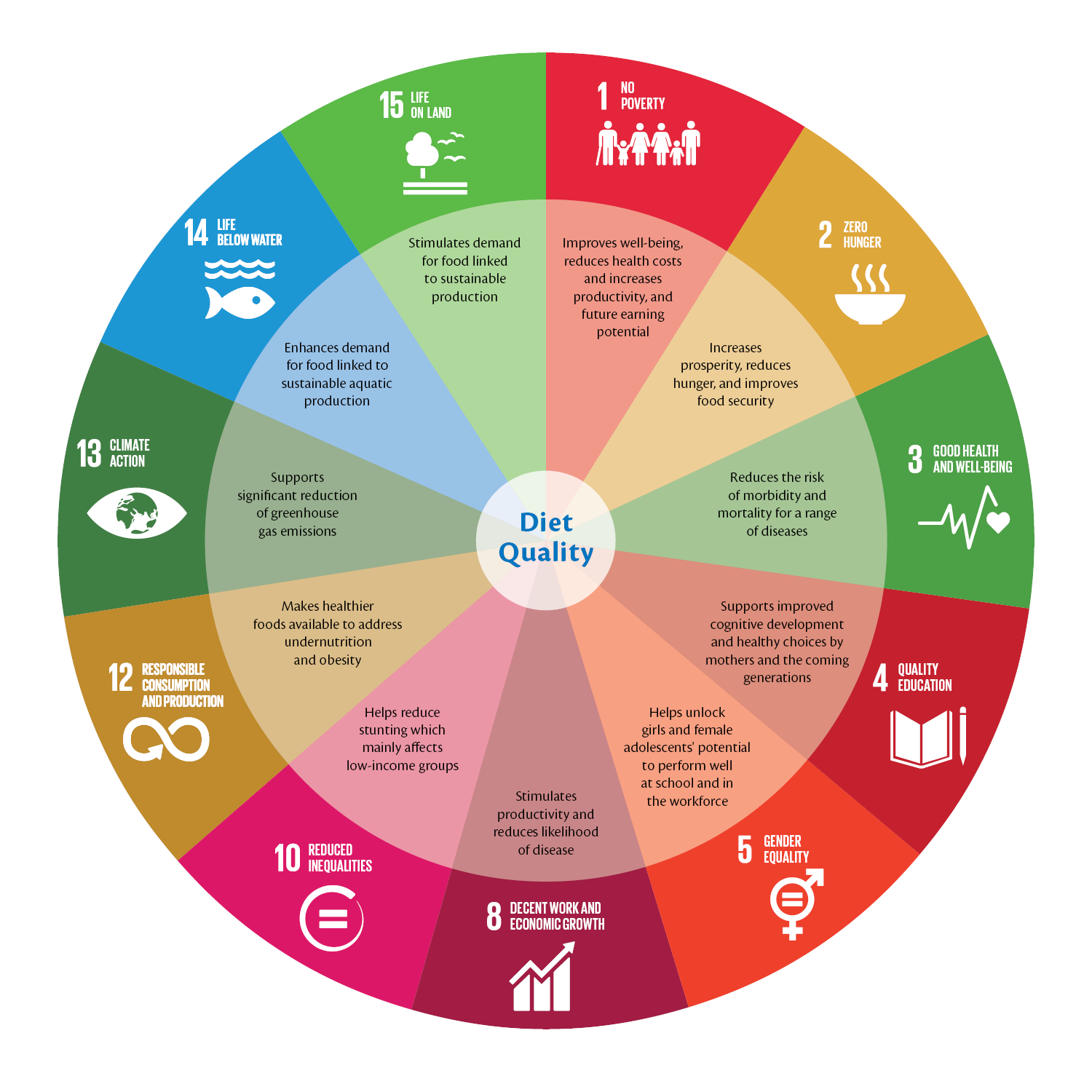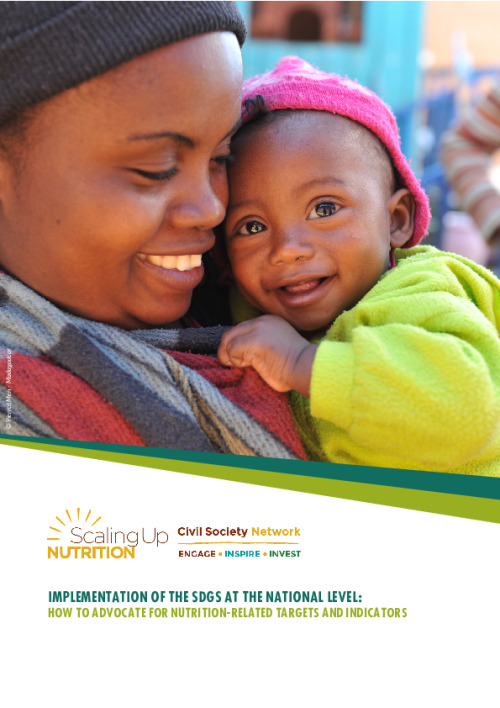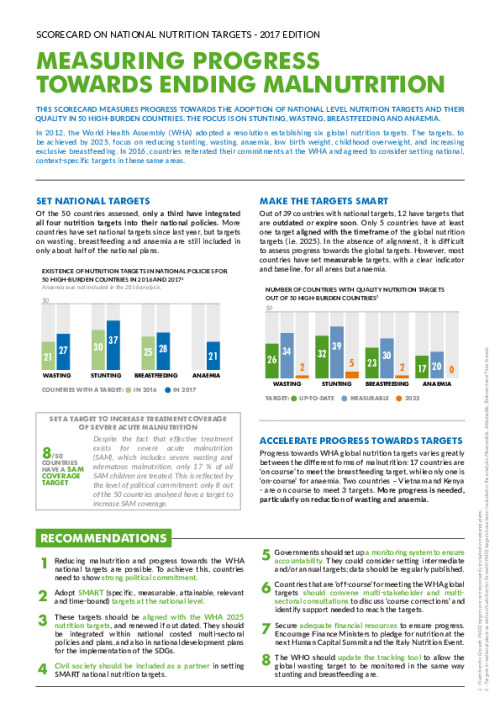Linking nutrition and the SDGs
In September 2015, more than 150 world leaders attended the UN Sustainable Development Summit to formally adopt an ambitious new sustainable development agenda. Agreed by the 193 Member States of the UN, the Agenda is formally titled, “Transforming Our World: 2030 Agenda for Sustainable Development,”.
The 2030 Agenda builds on the Millennium Development Goals and consists of a Declaration, 17 Sustainable Development Goals (SDGs), 169 targets, a section on means of implementation and renewed global partnership, and a framework for review and follow-up. The 2030 Agenda went into effect on 1 January, 2016.
Over the next fifteen years, the SDGs commit all governments to comprehensive, integrated and universal transformations, including ending hunger and malnutrition by 2030. Countries will mobilise efforts to end all forms of poverty, fight inequalities and tackle climate change, while ensuring that no one is left behind.
Nutrition is both a maker and a marker of development. Improved nutrition is the platform for progress in health, education, employment, empowerment of women and the reduction of poverty and inequality, and can lay the foundation for peaceful, secure and stable societies.
Without adequate and sustained investments in good nutrition, the SDGs will not be realised. The ambition to ‘End hunger, achieve food security and improved nutrition and promote sustainable agriculture’ is captured in SDG 2, however, at least 12 of the 17 Goals contain indicators that are highly relevant to nutrition.
Malnutrition will represent an often invisible impediment to the successful achievement of the SDGs. It results not just from a lack of sufficient and adequately nutritious and safe food, but from a host of intertwined factors linking health, care, education, water, sanitation and hygiene, access to food and resources, women’s empowerment and more.

UN High-Level Political Forum for Sustainable Development
While the SDGs are not legally binding, governments are expected to take ownership and establish national frameworks for to achieve the 2030 Agenda. In accordance with the 2030 Agenda, Member States are to “conduct regular and inclusive reviews of progress at the national and sub-national levels, which are country-led and country-driven”. The 17 SDGs with 169 targets will be monitored using a set of 230 global indicators that were agreed by the Statistical Commission in March 2016.
Starting in July 2016, under the auspices of the Economic and Social Council (ECOSOC), the UN High-Level Political Forum (HLPF) on Sustainable Development oversees the follow-up and review of the implementation of the SDGs. The HLPF provides the platform for the full and effective participation of all Member States and members of specialized agencies.

